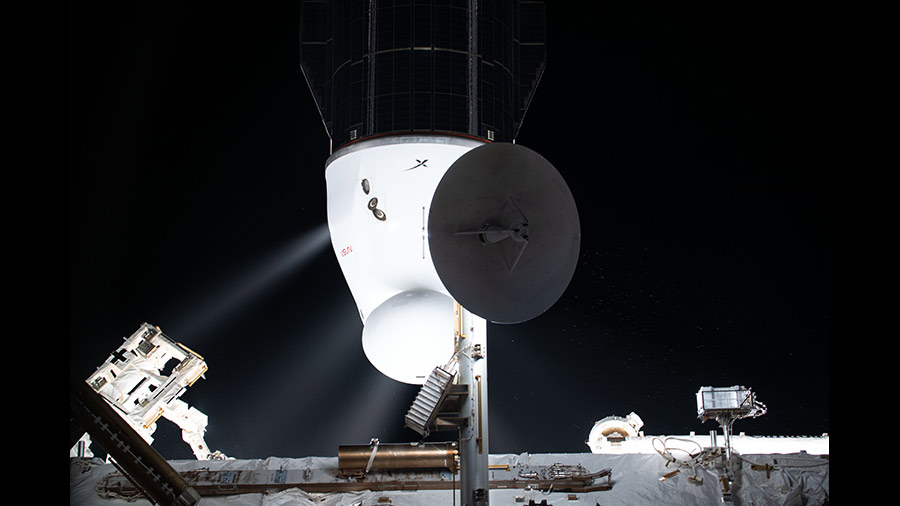Crew Hearing Checks, Lab Cleanup after Dragon Splashes Down

A U.S. resupply ship completed its 24th International Space Station cargo mission after returning to Earth on Monday afternoon. Meanwhile, back in space the Expedition 66 crew had hearing tests while working on a myriad of orbiting lab and science maintenance tasks.
The SpaceX Cargo Dragon space freighter parachuted to a splashdown off the coast of Florida carrying over 4,900 pounds of science experiments and station hardware on Monday at 4:05 p.m. EST. The commercial cargo craft undocked from the Harmony module’s space-facing port on Sunday at 10:40 a.m. completing a 32-days attached to the space station.
On Tuesday, three astronauts participated in a pair of different hearing studies. Flight Engineer Matthias Maurer of ESA (European Space Agency) kicked off his day working on the Audio Diagnostics study to measure how station noise levels impact an astronaut’s hearing. At the end of their day, NASA Flight Engineers Mark Vande Hei and Raja Chari took part in a hearing assessment as part of regularly scheduled exams.
Continuous orbital maintenance is necessary to keep the station and its multitude of systems in tip-top shape. NASA astronaut Kayla Barron worked on transferring water into tanks, then searched for a camera pan tilt unit for the Mission Control based Inventory and Stowage Officer before cleaning up the U.S. Quest airlock after spacesuit battery work. NASA Flight Engineer Thomas Marshburn organized cables in the U.S. Destiny laboratory module before making space inside the Leonardo permanent multipurpose laboratory module ahead of an upcoming U.S. cargo mission.
Over in the Russian segment of the station, Commander Anton Shkaplerov participated in a human research study to determine the effectiveness of exercising in weightlessness. Roscosmos Flight Engineer Pyotr Dubrov assisted the commander during the exercise study then worked on European Robotic Arm computer systems inside the Nauka multipurpose laboratory module.
from Space Station https://ift.tt/3G2dxzd
Comments
Post a Comment